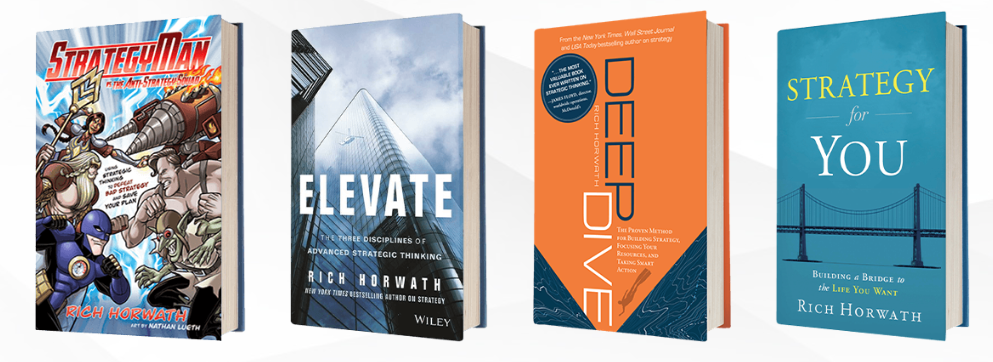“Competition gives you a focus. Lots of times you need a mission, a bullseye that keeps you focused, and competition can do that.”
Anne Mulcahy, former CEO, Xerox
Behind every great achievement, behind every person who has accomplished something worthy, stands the spirit of competition. For those who cower in the comfort of complacency, waiting for others to give them something they haven’t earned, competition is a stranger. The stranger invites them to rise up, which takes initiative and courage, two dwindling resources in the social media-laced haze of watching instead of doing. Competition extends a hand and invites you to meet your better self.

The ancient Greeks called it Aretas—attaining excellence through competition. This Grecian virtue’s end game is not victory, although a common result, but rather the discovery of unseen reservoirs of effort that enhance performance. And this enhanced performance is boundless, occurring in the arts, music, athletics, business, science, medicine, engineering, and other areas and disciplines. Prolific American inventor Thomas Edison only turned his attention back to designing the phonograph because his rival Alexander Graham Bell was coming out with a similar product. Edison said, “I don’t care so much for a fortune as I do for getting ahead of the other fellows.”
The term “compete” comes from the Latin competere, which means “to strive together,” from the roots com (together) and petere (to seek). Simply put, competition makes us try harder than we would without it. As far back as 1898, Indiana University psychologist Norman Triplett’s research demonstrated that bicyclists were faster when competing with other cyclists versus racing alone. The conclusion that the element of competition increases performance greater than performance without competition has been confirmed in dozens of additional studies over the years in academics, athletics, arts, sciences, etc.
The elite performers don’t wait around for high-level competition to emerge. They intentionally seek it out or even create it. Competition can come in the form of a traditional rival, a new entry into your arena, colleagues, teammates, previous personal best performances, or the status quo. The key is to identify a competitive force that will trigger your higher level of performance and ride that wave to a higher plane. John Legere, former CEO and president of T-Mobile said, “As we changed our business and rebuilt our network, we began pointing out the contrast with our rivals—loudly. Every good narrative has a villain, and we picked ours early on: AT&T. At Global Crossing, for instance, the enemy was bankruptcy.”
Those that don’t utilize the catalyst of competition, or worse yet, underestimate the competition, will face the consequences. Here are a few examples of successful business leaders that underestimated their competition and paid a price for doing so:
“This won’t create another crisis for the Swiss watch industry. From the design point of view you cannot say it’s a watch—more an iPhone for the wrist. People may travel with it, but it won’t replace the watch you wear to a party.” Jean-Claude Biver, former president of LVMH’s watch business on the Apple Watch.
“I have never heard such rubbish. I accept that supermarkets are a thorn in our side, but not for the serious music…buyer and as for the other two (online retailers and downloadable music), I don’t ever see them being a real threat; downloadable music is just a fad.” Steve Knott, former managing director of British music company HMV.
“If a company is not able to keep up with the changing needs of its customer, it will become irrelevant. There is a wonderful role for Netflix service in the marketplace, but it’s very different from ours. I think we co-exist quite well with Netflix.” Jim Keyes, former CEO, Blockbuster, 4 months before filing bankruptcy.
As you are developing strategies to outperform your competitors in serving customers, it’s critical to take into account their potential responses. The following three questions may be of use:
- What is the probability that the competition will react to this strategy?
- If the competition does respond to this strategy, what are their three most likely options?
- What, if any, would be our response to their counteraction?
A McKinsey & Co. study of more than 2,000 global executives found that 47 percent do not believe their organization’s strategies embodied the creation of advantage versus competitors. Instead, they described their strategies as focusing on operational effectiveness and emulating undifferentiated best practices, which we know aren’t technically strategies at all.
Too often, people are wasting their time and talent working on things which don’t contribute to competitive advantage. Consider your team: how much time and effort is being spent on activities which are not supporting the development of competitive advantage? When asked what the key was to returning the Lego Group to brand and financial success, former CEO Jorgen Vig Knudstorp said, “Only do the things where we had unique advantage.”
Competitive advantage can be described as an offering of superior value based on differences in capabilities and activities. These three elements—capabilities, activities, and offerings—form the foundation of competitive advantage. Capabilities consist of the assets or resources of a business. Activities are what you do with those resources to create value. And offerings are the manifestation of the capabilities and activities in the form of value received by customers.
If you determine that you do not have competitive advantage, several options exist to help achieve it:
- Change the offerings by reconfiguring capabilities and activities to generate new outputs (e.g., Marvel Comics transforming original comic book characters and stories into action films, video games, Lego sets, etc.).
- Create new capabilities through the development or acquisition of unique assets or resources (e.g., Oakland Athletics baseball team in the early 2000’s development of a sophisticated sabermetric approach to scouting and assessing players).
- Change the target customer’s perception of value by influencing the relevance of certain decision-making criteria (e.g., Chipotle’s emphasis on quality ingredients in pioneering the concept of the fast-casual restaurant).
- Change the game by migrating value into new areas where competition has been static (e.g., Tesla’s high-end design of electric vehicles).
For the ultimate competitive advantage also check out how to “Prepare Like a Champion”

